 |
 |
 |
A Nintendo community
by the fans!
|
 |
 |
∧ |
Forum main |
|
 |
Top Ten 3DS Virtual Console Wishlist Part 6: Genesis/Mega Drive [top ten]
|
|
|
 |
 |
|
 |
06/10/11, 11:22 Edited: 06/11/11, 07:43
|
|
|
|
|
 |
 |
 |
|
 |
 |
|
 |
 |
|
 |
 |
 |
 |
 |
Release Date: December 2, 1989 Developer: SEGA Publisher: SEGA Shinobi was first released in the arcades in 1987. The game has made its way onto a lot of different platforms, including the Sega Master System, the Game Gear, and the Genesis. There are three Genesis games in the series, The Revenge of Shinobi, Shadow Dancer, and Shinobi III: Revenge of the Ninja Master. Revenge of Shinobi, is a direct sequel to Shinobi, in it the newly reformed and renamed Neo Zeed killed Joe Musashi’s Master and kidnapped his girlfriend. Joe must rescue her before it’s too late. Shadow Dancer is the direct sequel to the Shinobi arcade game, but it’s not connected to Revenge of Shinobi (confusing, I know). In it Joe must avenge the death of Kato, his student, by the evil “Union Lizard Organization”. In Shinobi III, Joe Musashi must once again stop the Neo Zeed organization and defeat their Shadow Master. Out all of these games, I’m most interested in the third one. The graphics are better and the gameplay is faster (plus it has a really cool horse riding sequence). Trivia for The Revenge of Shinobi: Because of copyright issues regarding certain boss characters (many of which were based on cultural icons) there were at least four versions of the game in Japan and North America, with the later two also appearing in Europe. In version 1.00 Bosses clearly resembling Godzilla, Spider-Man, The Terminator, and Batman are present. Both Spider-Man and Batman are actually fake representations of themselves conducted by someone able to morph into his shape when enough damage is inflicted. SEGA eventually got the license to use Spider-man but it was only for a limited time. Trivia for Shadow Dancer: A version of the game for Mega Drive was also released in 1990 under the full title of Shadow Dancer: The Secret of Shinobi. It features the same play mechanics, but different stages and enemies. The main character's identity differs between the supplement materials of the Mega Drive version. In the Japanese version, the ninja was given the name Hayate, who is identified as the biological son of Joe Musashi from the original Shinobi, whereas in the English localization the ninja is actually Joe Musashi himself. His companion dog is named Yamato in both versions. Trivia for Shinobi III: Return of the Ninja Master: Shinobi 3 was originally set to be released in 1992. Several gaming magazines gave previews and even reviews of the game, showing pictures of levels, enemies, artwork and special moves which were not seen in the final version at all. Because of being unsatisfied with the result, Sega had put the game back into development to heavily improve it and delayed its release until 1993. When Shinobi 3 was finally released, a lot of game features seen earlier were missing, while new ones had come in place. A beta-version of the original version of the game has been leaked and is now widely available as a ROM image.  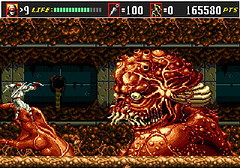
|
|
 |
 |
 |
 |
|
|
 |
 |
 |
|
 |
 |
|
 |
 |
 |
 |
 |
Release Date: 1995 Publisher: SEGA Technical Institute Publisher: SEGA Comix Zone is a very unique game that was released late in the Genesis’ life. In it you play as Sketch Turner, a rocker who’s working on a comic book called Comix Zone, in which an alien empire is trying to invade Earth. After his comic is hit by lightning, the villain Mortus escapes from the pages and traps Sketch inside the comic. Mortus must kill Sketch in order to become real and thus he becomes an artist, changing things in the comic in order to achieve his goal. The premise is stupid, but the game is awesome. The game is a sidescrolling beat’em up taking place inside comic panels. You must traverse through the comic world and defeat Mortus in order to escape. I played this game not knowing what to expect and was pleasantly surprised to find an original take on the beat’em up genre. Not only does Mortus interact with the world, so can you. For example, you can find things hidden behind the panels of the comic and you can gain superpowers which you did not have in the “real world”. If this game ever is released on the 3DS VC, I highly recommend that you download it. Trivia: Mortus does intend to give Sketch a 'sporting chance'. After the first chapter, if Sketch dies, Mortus will allow Sketch another chance to complete the page from the first panel, stating "Oh, come on -- that was just too easy!" After the second chapter, Sketch will get one more chance. If Sketch still has a chance at completing the game, his last words will be "Is this the end of the story?" If he has no such chances, his last words will simply be "Game over, man. The end."  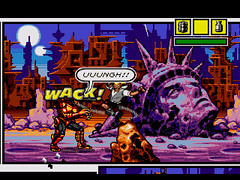
|
|
 |
 |
 |
 |
|
|
 |
 |
 |
|
 |
 |
|
 |
 |
 |
 |
 |
Release Date: 1991 Developer: SEGA AM7 Publisher: SEGA The Streets of Rage beat’em up series was released on Genesis in 1991, perhaps as a response to Final Fight. In the first game, you play as either Axel, Blaze, or Adam (pretty much Cody, Guy, and Haggar) against an evil crime syndicate. Instead of having individual special attacks, your special attack consisted of calling a back-up enforcer who assists you with a machine gun or missile launcher. In the second game, you play as either Axel, Blaze, Skate (Adam’s little brother), or Axel’s friend, professional wrestler Max Thunder. In this game, instead of having one special for everyone, each character gets their own special attack. In Streets of Rage 3, you play as Axel, Blaze, Skate, or Dr. Zan (who substitutes Thunder). There are also three hidden playable characters, two bosses Shiva and Ash, and a Kangaroo named Roo. The gameplay is also a bit more complex with running and dodges added. Of all three games, I am most interested in the third game because of the more complex gameplay elements. Trivia for Streets of Rage: In Japan, the game and the series is known as Bare Knuckle. Sega ported Streets of Rage to arcade cabinets using both their Mega Tech and Mega Play arcade boards, the difference being that in the Mega Tech version you pay for time, not credits. There are two possible endings to the game. The "Good" ending is achieved for simply completing the game. The "Bad Ending" can only be achieved in 2-player mode when the final boss is confronted. There were plans for two further sequels to Streets of Rage, one of which was developed by Core Design for the Sega Saturn, But Sega pulled the Streets of Rage name during development after a disagreement with Core about porting it to rival formats. The game was eventually released on the PlayStation and Nintendo 64 as Fighting Force. A fanmade game titled Streets of Rage Remake was released by Bombergames in April 2011 as a free download for Windows, but was pulled a few days following release after a request from Sega. In a statement, Sega said it took action to protect their intellectual property rights. Trivia for Streets of Rage 2: Unlike the other two games in the series, this game has only one endingThe Stage 4 boss "Abadede" bears a strong resemblance to that of the former professional wrestler The Ultimate Warrior, who had worked for the WWF in the early 90's. The first of the three fat enemies in Stage 5 is named "Heart", as a reference to the popular manga Fist of the North Star (original Japanese name Hokuto No Ken), which featured an extremely overweight martial artist called Heart. The character Skate resembles the eponymous playable character from the game DJ Boy, another side-scrolling beat 'em up. This arcade game, developed by Kaneko, was later published by Sega on the Mega Drive. In fact, Sega changed the in-game name of the character from "Sammy" in Bare Knuckle 2 (Japanese release) to "Skate" in Streets of Rage 2(U.S. release); American Sammy licensed the arcade game for U.S. distribution. Skate is the character's nickname in both incarnations; his first name in the non-Japanese versions is given as Eddie. Trivia for Streets of Rage 3: Bare Knuckle 3 is significantly different from Western counterpart in terms of gameplay, graphics, sound and plotline. As usual BK's Sammy becomes SOR's Skate. But this time around, the Japanese and Western names are quite different. BK3's punk names are very similar to those of SOR2, with Galsia instead of SOR3's Garcia. Sega of America for some reason saw fit to rename them all pretty badly. The weapons are also heavily renamed, this time for the better. The main characters in Bare Knuckle 3 sport their Streets of Rage 2 costumes, so Axel is blue and white and Blaze is in red. Also, some the enemies have different costumes; in Round 1 Shiva has the dark green costume that he wears as the final boss in SOR3 instead of his normal one. Electra and the new woman punk enemy are somewhat scantily clad in Bare Knuckle 3 and were covered up by Sega of America for Streets of Rage 3. Axel saying "Grand Upper" in the Japanese version when he does his special, but "Bare Knuckle" in the American version. The Japanese version also has a seventh playable character named Ash that's accessible via a cheat, and that appears in-game as a boss. Ash is also a pretty blatant caricature of gay males, so Sega of America removed him and a group of punks and Shiva. In BK3's Good Ending Blaze wears somewhat less than she does in SOR3.  
|
|
 |
 |
 |
 |
|
|
 |
 |
 |
|
 |
 |
|
 |
 |
 |
 |
 |
Release Date: October 1st, 1994 Developer: Capcom Publisher: Capcom Mega Man the Wily Wars is a remake of the first three games for the Japanese and European Mega Drives. Each game has enhanced graphics and sound, just like Super Mario All-Stars. The game also features a battery pack for saving the game. After completing all three games, a new game mode is unlocked called Wily Tower, in which Mega Man must fight his way through a tower and defeat three new Robot Masters, together called the Genesis Unit. After defeating them, you get to fight Wily again. This game was never released as a boxed game in the U.S. It was only available as part of the SEGA Channel. I have always loved the old school Mega Man games and having an enhanced compilation of my favorite ones would be fantastic. Trivia: In all games, shots are limited to one shot every few frames of animation. In the originals, you could fire your weaponry on every other frame. The controls in these versions of the games seem a little tighter than the originals, though Mega Man himself seems to have a slight delay before moving because he is able to do sidesteps. Speaking of delays, a number of weapons now have a noticeable "can't move" delay after firing, such as the Items from Mega Man 2 or the Shadow Blade from Mega Man 3. All three games now have a "save game" feature. However, the "password" feature was removed from Mega Man 2 and 3. At several points during the game, it suffers from very bad slowdown. However, for less-skilled gamers, this can be a positive effect, because the Yellow Devil's stages in Mega Man and 3 suffer from it the most, as does the battle with the Wily Machine in Mega Man. This makes those boss battles much easier. For some reason, the "All Stage Clear" theme from Mega Man 3 isn't in the Sound Test option. In general, despite their names, the games are based more closely on the Rockman versions than on the games; most notably, Normal Mode is absent from Mega Man 2. The Title Screens are also based in their Japanese versions, but with "Rockman" changed to "Megaman".  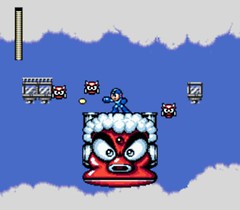
|
|
 |
 |
 |
 |
|
|
 |
 |
 |
|
 |
 |
|
 |
 |
 |
 |
 |
Release Date: September 1, 1990 Developer: Capcom/SEGA Publisher: SEGA I have an interesting history with Strider. My first experience with the franchise was the NES game of the same name. If you have played this game then you know that it is drastically different from the Arcade and Genesis versions. The game was more adventure-like in scope. You had action but puzzles at the same time. Many people considered it to be a bad game, but I really enjoyed it. When I finally played the Arcade version, I was blown away. The gameplay was hack’n slash all the way and the graphics and gameplay were phenomenal. I also loved the inventiveness of the stages and characters. I was surprised when I would fight a bad-ass enemy only to find out that it wasn’t even a boss. I just loved it. The Genesis version is a port of the Arcade version, with lesser graphics and sound, but retaining the awesome gameplay. If this game ever makes it to the 3DS VC, I recommend buying it immediately. Trivia: This port is mostly faithful to the arcade original in replicating its graphics, sound, and gameplay. Hiryu's whole arsenal of weapons and items remain intact, the controls are as responsive as the original, the stages are complete, and all enemies are present. Any differences are minor, such as some missing animation frames and the overall graphical quality being slightly lower and more pixelated. Notable changes include: An Option menu allowing the player to select difficulty levels (Easy, Medium, and Hard), number of lives, and a Sound Test option containing the entire soundtrack and sound effects. A Continue system replaces the coin-op mechanic. Hiryu has a finite number of "Continues" that, upon reaching zero, leads to a Game Over and back to the title screen. All stage intro texts (showing the stage's name in different languages) have been removed save for the first stage ("Казахская CCP", or Kazakh SSR written in Russian), probably due to space constraints. An all-new ending replaces the original. Instead of Hiryu landing on a whale, he's shown escaping the destruction of The Third Moon in his glider while the credits roll. The first boss fight against Solo cannot be avoided, as the stage doesn't scroll ahead until he's defeated. Similarly, Strobaya's boss battle is also unavoidable. The sprite for the Amazon enemies have been edited, removing their leaf top. The Invincibility powerup's after-image effect is absent; Hiryu only becomes transparent while using it. 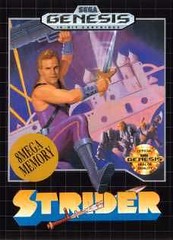 
|
|
 |
 |
 |
 |
|
|
 |
 |
 |
|
 |
 |
|
 |
 |
 |
 |
 |
Release Date: September 9, 1993 Developer: Treasure Publisher: SEGA Gunstar Heroes is a sidescrolling shooter reminiscent of Contra. You have to shoot through hordes of droids using 4 different types of weapons. Unlike Contra the weapons can be combined to form 14 unique weapons. Also, unlike Contra, the player can also fight the enemies hand to hand and slide like Mega Man. The graphics are great and colorful, the music sounded better than most Genesis games, and the gameplay was fun, fast, and unique. This game would make a great addition to the 3DS VC. In fact, I would love it if Treasure brought back the franchise for the 3DS. Trivia: Shortly after its original release, Gunstar Heroes made its way to Sega's handheld machine, Game Gear. The port was handled not by Treasure, but by the development house M2. As the console's power could not be matched to that of the Mega Drive, the game was significantly scaled down, stripping its multi-player mode, Black's Dice Maze, and several graphic effects. It does, however, add in a few new features such as a jetpack level and the chance to drive one of the walker robots from later in the 16-bit version. On October 6, 2005, Treasure and Sega released Gunstar Super Heroes, a Gunstar sequel for the Game Boy Advance. The game makes a few changes to the gameplay, such as having a fixed weapon selection and the addition of 'super' attacks controlled by the trigger. 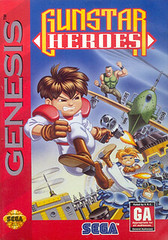 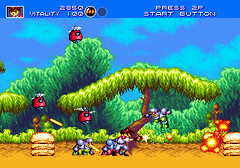
|
|
 |
 |
 |
 |
|
|
 |
 |
 |
|
 |
 |
|
 |
 |
 |
 |
 |
Release Date: August 3, 1992 Developer: Now Productions Publisher: Namco The Splatterhouse series began its life as an arcade game. That game was ported to the Turbo Grafx 16. The sequel, Splatterhouse 2 was made exclusively for the Genesis. In the sequel, Rick must once again go back to West Mansion, also known as “Splatterhouse” in order to save his girlfriend’s (Jennifer) life with the “help” of the terror mask. The game, a sidescrolling beat’em up, is very similar to the first. You scroll from left to right, without moving up or down, beating up monsters in order to save your girlfriend. In third game, Rick and Jennifer are married and have a son named David. Rick became rich through wallstreet allowing him to buy a mansion, where the action takes place. Ricks’s mansion is invaded by monsters and Rick must once again use the terror mask to defeat evil. The third game departs from the gameplay of the first two by allowing you to move up and down. The game is also different in that it is not a typical sidescroller. You traverse through rooms in Splatterhouse but you can traverse back, through the mansion, as long as you haven’t completed each level. You can access a map which will help you in case you get lost. You also have a timer on the top of the screen which dictates how the story unfolds. In order to get the best ending, you must clear all levels before the timer runs out. Rick can also collect orbs to fill a power meter at the bottom of the screen which allows him to hulk out and become a bigger, more powerful version of himself for a limited time. When I was young, I fell in love with this game. I loved the dark and gruesome graphics, the creepy music, and the non-linear beat’em up gameplay. I also loved the story. I found it very creepy especially since you could get 4 endings, 3 of them bad. The use of stylized digital graphics for the cutscenes also gave the game a creepy realistic vibe. I’ve been waiting for this game to arrive on the Wii VC for a long time, and even if it does, I would love to have a portable version too. Trivia for Splatterhouse 2: In the western versions of the game, the design of the terror mask is skull-like. In the Japanese version, the mask is white with black stripes over each eye; the mask loosely resembles a Japanese kabuki mask. Due to the translation when the game was localized, some elements are clearer in the Japanese version. In it, the Mask instructs Rick to "find the hidden house" and that Jennifer is in "the land of the dead". In the western version, the Mask instructs Rick to "go back to the house" and does not specify where Jennifer is. This has caused some confusion among players that have not played the original Japanese version, with several believing that the intact mansion in the second game is the West Mansion from the original Splatterhouse, when in fact the charred ruins that make up the first stage are what's left of West Mansion (these ruins can also be clearly seen in the opening of the game, before the screen scrolls over to reveal the other mansion, aka the "hidden house"). Trivia for Splatterhouse 3: There are four possible endings, depending on if you save Jennifer and David, save one or the other, or fail to save them both. All endings start out with the Mask saying he'll continue to exist as long as there's human suffering, and as he shatters, it says how the sky has cleared, and that evil has once again been banished. The endings are as follow. Bad Ending: If Rick fails to save both his wife and son, the ending goes as usual, but it states that Rick "stands alone, the weight of failure hanging heavily on him". It then shows a picture of he and his family, with the words "Alone... All alone." Jennifer Dies: If Rick fails to save Jennifer, but rescues David, it shows the ending as normal, but that Jennifer "exists only as a memory". It then shows David asking his dad where his mother is, and fades away after that. David Dies: If Jennifer is rescued, but David dies, the ending goes on as usual, but with David "being only a memory". Jennifer then asks Rick where David is, and after being told (though the dialog isn't shown), she cries out "no". Good Ending: Should both Jenny and David survive, the ending is different. Apart from a more pleasant tune, the mask's dialog changes. Instead of saying that he'll survive, he cries out "Can't see... can't hear... I'm dying...!!"before shattering. It continues as normal, saying Rick returns to his family, finally free of the Terror Mask.  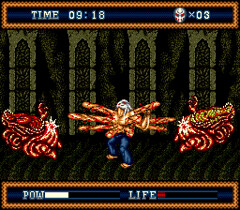
|
|
 |
 |
 |
 |
|
|
 |
 |
 |
|
 |
 |
|
 |
 |
 |
 |
Sonic the Hedgehog Series |
 |
Release Date: June 23, 1991 Developer: SEGA Publisher: SEGA You knew Sonic was going to make this list. When SEGA Released the Genesis in 1989, they packed it in with Altered Beast. We all know Altered Beast sucks and the main character was pretty forgettable. Sony needed a mascot to compete with Mario and a good game to package with the system. The first game in the series titled, Sonic the Hedgehog, was released in June 23, 1991 and became an instant hit. Having found the answer to both problems, SEGA then started to package the Genesis with Sonic the Hedgehog and the units started to fly off the shelves. Sonic is considered to be one of the key reasons for the company’s success. The first game stars Sonic a blue hedgehog who can run at speeds faster than the speed of sound and who can tuck himself into a ball. Sonic must find rings in order to keep himself alive. As long as he has one he’ll be fine, unless he falls in a pit or is hit by spikes. Sonic must stop Dr. Ivo Robotnik from stealing the Chaos Emralds which will allow him to rule the world. In the second game, Sonic meets a Fox with two tails named Miles “Tails” Prowers on West Island. Dr. Robotnik launches a full scale attack on the island in order to obtain the Chaos Emeralds. The gameplay in this game is very similar to the first game but you can play as Sonic, Tails, or Sonic and Tails. Sonic also gains a new ability by collecting all seven chaos emeralds. He is able to become Super Sonic for a limited time whenever he gains 50 coins and jumps in the air. He becomes invincible, faster, and he can also jump higher. In the third game, Robotnik’s Death Egg crash lands on Angel Island where Knuckles the Echidna protects the Master Emerald. Robotnik convinces Knuckles that Sonic and Tails are evil, so he attacks them and steals their Chaos Emeralds. Sonic and Tails hunt down Knuckles to retrieve them. In the third game, Sonic gains elemental shields and Tails can fly and swim for a limited time. Out of all these games, I’m most interested in the second one, my favorite in the series. Trivia for Sonic the Hedgehog: There are two versions of the game, one being a revision only released in Japan. This update makes some very minor changes to the game's programming, as well as adds some visual effects such as scrolling clouds in Green Hill Zone or water ripples in Labyrinth Zone. For an unknown reason, there were only 6 Chaos Emeralds in this game, where-as in later games (With the exception of Sonic the Fighters, as that game has 8 Chaos Emeralds), there were only 7 Chaos Emeralds. Trivia for Sonic the Hedgehog 2: Taking into account the strengths and weaknesses of the predecessors, the designers of Sonic the Hedgehog 2 intended for the graphics to display the "natural beauty" and "mechanical texture of materials forming a clear contrast with each other". The staff introduced new graphical elements such as the special stages with 3D-like appearances, and increased the speed of Sonic the Hedgehog 2 in relation to its predecessor. The game was originally meant to contain time travel and it was to be released on Mega-CD, but this idea was dropped in development; the Mega-CD port of the game became Sonic CD, where the time travel elements were implemented. Trivia for Sonic the Hedgehog 3: While Sonic and Tails have their respective "special abilities" in Competition mode, Knuckles does not have his glide/climb ability seen in Sonic & Knuckles. Instead, he uses Sonic's Insta-Shield ability (which is ineffective for Competition mode). Sonic 3's cartridge contains unused music tracks that appear in Sonic & Knuckles. Marble Garden is the only zone in Sonic 3 not to feature water; though all levels in Sonic & Knuckles do not feature water albeit has the bubble shield. Sonic 3 was the second Sonic game to feature an ice-based level (after Sonic the Hedgehog), which would later become a recurring theme in the series. Some levels from Sonic & Knuckles appear in the level select which is activated via a cheat code, seen as "Sound Test" on the Title screen. Incidentally, this cheat code is considered one of the most difficult to execute in any game ever released. Sonic 3 is the only game of the Genesis/MegaDrive trilogy without the first level to have the word "Hill" in it. In the level Marble Garden Zone when you run on the blue spinning platforms, Sonic's pupils disappear. The day of Sonic 3's release was known as Hedgehog Day, mirroring Groundhog Day from Feburary 2nd. 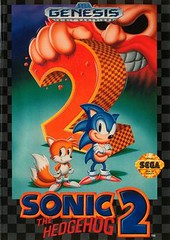 
|
|
 |
 |
 |
 |
|
|
 |
 |
 |
|
 |
 |
|
 |
 |
 |
 |
 |
Release Date: August 8, 1994 Developer: Konami Publisher: Konami I really loved the Contra Hard Corps on the Genesis. It was a departure from other Contras for different reasons. First, there were 4 characters to choose from: a guy, a gal, a robot, and a wolfman. They all had different weapons. Also new to the series were actual antagonists. Instead of the Red Falcon from previous games, our protagonists were fighting Bahamut a rogue Colonel from the Alien Wars (Contra III) and his three henchmen, along with a horde of robots. Unlike Contra III, the game also has no missions in bird’s eye view. Also new this time, the player can choose between two weapon stances, one where the player shoots while moving and one where the player can only move his aim. The player can also slide (and hover if you’re the robot). The game also features different paths, different bosses depending on those paths, and five different endings. The game is one of the hardest games I have ever played but it’s also a lot of fun. I can’t wait to play this on the go with the advantage of Save States. Trivia: The Japanese version, titled Contra: The Hard Corps, was made significantly easier than its North American counterpart due to the addition of a life gauge that allows the player to take three hits from an enemy before losing a life. The Japanese version also features unlimited continues, in contrast with the American, which only provides five chances. The Japanese cover features an illustration drawn by animator Yasuomi Umetsu, who also provided some of the character art in the game's manual. The PAL version of the game is titled Probotector and like the European localizations of previous Contra games for home consoles, the main characters and some of the enemies were renamed and replaced with robotic counterparts (Browny was left unchanged, with only his name changed). The plot was also rewritten, with Colonel Bahamut and Dead-Eye Joe being redesigned as humanoid aliens, and the alien cell was replaced with a computer device called the "X-Drive". The gameplay is the same as the North American version, but the player only has four continues in the European version, instead of five like in the North American release. It should also be noted that in the PAL version some cutscenes were altered; for example, the player character no longer identifies the boss of Stage 1, a robot previously thought unmanned, to be piloted by a man, or Dr. Geo Mandrake being eaten by a monster created in his merger machine. It has also become impossible to side with General Bahamut/the Alien General, thus eliminating one of the endings. The Japanese version of the game includes a health bar and infinite continues but it was removed from the American and European versions. In the Level 3, just before you break the first door, if you climb up the wall you will findd a Mysterious Character if you accept the fight you will fight a boss that is a parody from both Simon Belmont and Simon Masoto. In the final boss battle, Colonel Bahamut will invite the player to unit him and the player has two options; if you refuse he will fight Bahamut, if you agree the bad ending will appear. The Game Boy Advance Port of Contra III features two stages from Contra: Hard Corps.  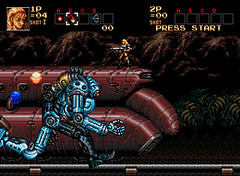
|
|
 |
 |
 |
 |
|
|
 |
 |
 |
|
 |
 |
|
 |
 |
 |
 |
 |
Release Date: August 8, 1994 Developer: Konami Publisher: Konami Castlevania is one of my favorite videogame series. I love the gameplay, the music, the graphics, and the overarching storyline. Castlevania Bloodlines is the first and only Castlevania game for the Genesis. It is also the only game in the series to be on a SEGA console until Symphony of the Night was ported to the SEGA Saturn. The game features two main characters John Morris, the current wielder of the Vampire Killer and Eric Lecarde a master lancer. The two must defeat Countess Bartley who wishes to resurrect her uncle Dracula. The player traverses through Castlevania, Athens, Pisa, Germany, Versailles, and England on their quest to stop Bartley. The gameplay was similar to other Castlevania titles in that the player must use and power up his weapons to defeat enemies and bosses. John and Eric can also use three subweapons in addition on their whip and lance. If the Genesis is ever released for the 3DS Virtual Console I hope that Castlevania Bloodlines is one of its first titles. I’ve never played this game to completion, and I would like to rectify this. Trivia: This game attempts to bridge the Castlevania games with the Dracula novel written by Bram Stoker, which the series had only been loosely connected to previously, having arguably more in common with the 1931 Bela Lugosi film than the actual novel. Castlevania: Bloodlines underwent censorship during localization to PAL regions in Europe and Australia. The word blood was kept out of the title at the time. Therefore, the title was altered to Castlevania: The New Generation. When the game starts, the blood from the bottom of the title screen was changed to water. Another thing that was changed for the title screen is that the North American and Japanese versions had blood dripping effects from the title to the blood pool, but in the European version, the title screen just faded in through pixelated text and had no blue water dripping effect. The zombies were changed from pink to green to make them less gruesome. In the European version, Eric's spear does not impale him after he dies. There was a rearrangement of enemy placement as well, making the difficulty either easier or harder depending on where in the game the player is. Also, only some sub-bosses use the life bar meter to show damage, whereas others don't. Despite Australia being part of the PAL region, Sega Australia, the distributor of Konami's products on the Mega Drive used an uncensored version of The New Generation, with almost everything intact to be as close as possible to the Japanese version. In the Japanese version, the title was simply Vampire Killer, and is much closer to its American counterpart than the PAL edit in terms of content. The "normal" mode is a bit less difficult than Bloodlines, with lower enemy appearance rate and more damage dealt. This version is also what accredited the "Drolta Tzuentes" edit. The character actually appears to fight during the final battle with Dracula to give him time to power up to his final form, whereas in the American version the sprite character is credited as being just another form of Dracula. Also, Eric's facial features were more feminine in the Japanese version. When brought to North America, his facial design was changed in the intro to seem more masculine. Oddly, although also changed for the European and Australian versions intro, his feminine face was kept for the cover of those releases. The game was originally released as a side story of Castlevania series. The game is first to refer to the legendary Belmont whip as the Vampire Killer. The whip is called "Vampire Killer the Sorcery Whip." The American Bloodlines manual states that Drolta was an amateur witch who casts a spell which inadvertently brings Elizabeth Bartley back to life. However, Drolta plays a much more prominent role in the Japanese game; she is in actuality the second to last boss. The Belmont warrior and the woman shown at the intro are most likely a reference to Trevor and Sypha, or Simon and Serena. The game was rated "GA" for "General Audiences" by Sega's VRC ratings board, but possesses a considerable amount of violence and gore for an "all ages" game. Interestingly, almost all the fire effects used in the game are a bluish tint.   http://www.youtube.com/watch?v=Z3-KFHdVtDs
|
|
 |
 |
 |
 |
|
|
 |
 |
 |
|
 |
 |
|
 |
 |
 |
 |
Honorable Mentions: Disney’s Aladdin, Dr. Robotnik’s Mean Bean Machine, Ecco the Dolphin Series, Eternal Champions, Ghostbusters, Golden Axe Series, The Lion King, Space Harrier, Rocket Knight Adventure, Shining Force, Ristar, Vectorman Series, Zombies ate my Neighbors, Beyond Oasis, Castle of Illusion. This is the last of my Top Ten 3DS Virtual Console Wishlists. However, that doesn't mean that I'm done with the retro consoles on the 3DS. Remember after all, there's still a little something called 3D Classics which will feature NES and SNES games. Coming up next... Top Ten 3D Classics Part 1: NES  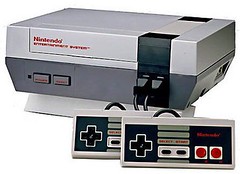 Top Ten 3D Classics Part 2: SNES Top Ten 3D Classics Part 2: SNES  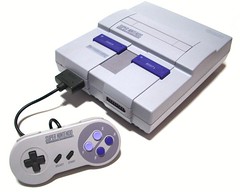 Honorable Mentions: Honorable Mentions: Tails Adventure, Shinning Force: Sword of Hajya Negative World 3DS Links
URL to share (right click and copy)
|
 |
 |
 |
 |
 |
06/10/11, 11:22 Edited: 06/11/11, 07:43 |
|
|
|
|
 |
 |
 |
|
 |
 |
|
 |
|
|
 |
 |
|
 |
 |
|
|
|
|
|
|
|
|
|
 |
 |
 |
 |
roykoopa64 said:I would love having such a broad range of video game systems on a portable platform, and this could also make up for some of the titles we missed out on Wii VC.
Nice list! These are games I know I would enjoy as well. Some of these I've never played before.
I always forget that Wily Wars even existed, but then again it wasn't released in the U.S. outside the Sega Channel. I just watched some of the video, it's kind of strange but cool to see these Mega Man games '16 bit-ified' Genesis style!
And look at the box art, its rated MA-13... Too much violence? Strange for a Mega Man game.
And wow, the box art for Strider is kind of bad, in a cheesy way.
Wow, I watched the video for Contra Hard Corps, that game looks incredible. I would love to play that game. Thanks for the support as always! I've always wanted to play WIly Wars ( legally). A portable version would be awesome. It also struck me as weird that it was rated MA-13. I'm guessing the box art was just created for the SEGA Channel. And yeah, the boxart for Strider sucks. Contra Hard Corps is an awesome game. It's as if Konami used the Genesis as a console where it could experiment with its franchises. X-pert74 said:Contra: Hard Corps is incredible. I still can't believe that it and the original NES Contra haven't hit the Virtual Console yet.
Shinobi was not a reaction to Ninja Gaiden. Shinobi was released in 1986, two years before the arcade and NES Ninja Gaiden games came out. I also can't believe we have not seen these games on the Wii VC, especially considering that Super C is already out. You are right, Shinobi was released first (but in 1987). Ninja Gaiden was released in 1988. The list has been fixed accordingly. |
 |
 |
 |
 |
|
|
|
|
|
|
 |
 |
 |
 |
Guillaume said:Save for your #1 and 2, they're all games that have been released and re-released over and over again. Let's just say my list would be very different... I feel that the Portable market is an altogether different beast from the console market. And now that we finally have the processing power and necessary control inputs to support it, I would hope that companies would continue porting awesome console games to handhelds. Not only does it please gamers like me who want to enjoy old gems like Castlevania Bloodlines again, now we can do it wherever we want. Plus, it keeps these games in the minds of gamers so that companies like Konami can keep them alive or even resurrect old franchises. For example, you can bet that whenever Shantae is released on the 3DS VC, Risky's Revenge will receive a boost in sales. Which might motivate WayForward to make a third game in the series. With regards to your picks I'm actually quite interested to hear them. I would hope that any article that I write can spark a good and respectful discussion and I would love to hear what the other members of the site would pick for each console. So if anybody has different picks, list them here with your reasons so we can discuss them, and maybe find some gems nobody's thought of. I think you may have noticed that I have not put any licensed games in any of my Top Tens. Since licensed games are so difficult to bring back because of all the legal issues involved, I decided to stay within the bounds of games the developers and/or publishers actually own. This also works out because it allows me to make a Top Ten Licensed games for each console later on. I've actually been working on it at the same time I have been doing the other Top Tens. I think I might only do them for NES, SNES, and Genesis (and maybe GBA), though. Hinph said:Good list. I look forward to talking about our most wanted 3D classics, especially.
I would have dropped money on Excitebike so it's really nifty that they gave it to us for free. Thanks. I'm really looking forward to it too. I had already mentioned to @roykoopa64 through Facebook that these two lists will be a little bit different. I'm adding a section called "Upgrades" in which I will discuss how the developers can make the game better by using the features of the 3DS. For example, in Excitebike, you can now play the game in Widescreen 3D and save up to 32 tracks. Unfortunately, they didn't use the bottom screen for anything, which I found disappointing. I'm also making some mock-ups for how the games may look on the 3DS (in 2D mode, of course). Here's a sample (and no, it's not the game I chose from the series):  |
 |
 |
 |
 |
|
|
|
|
|
|
|
|
|
|
|
|
|
|
 |
 |
 |
∧ |
Forum main |
|
|




